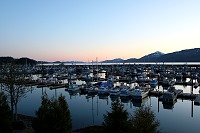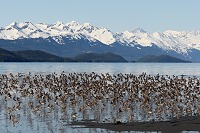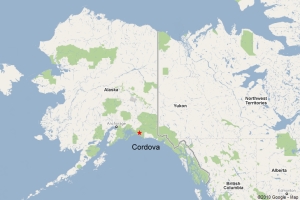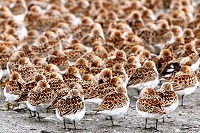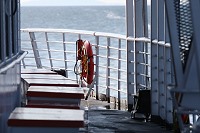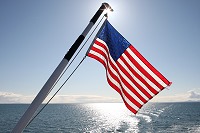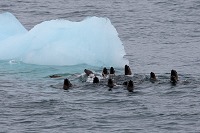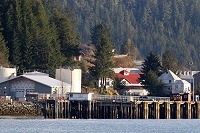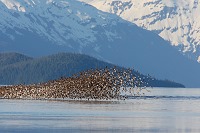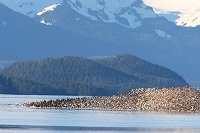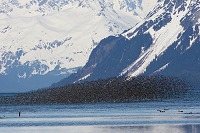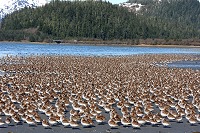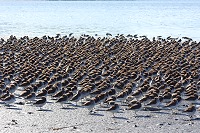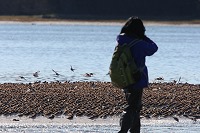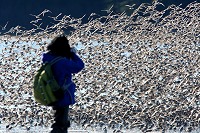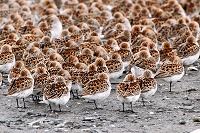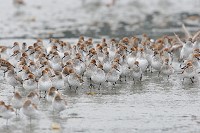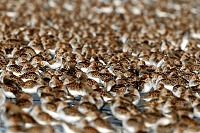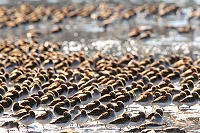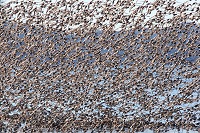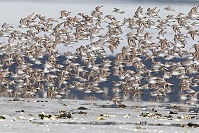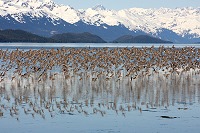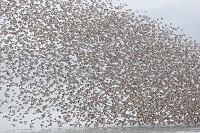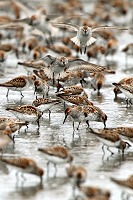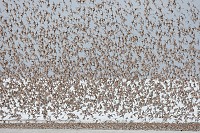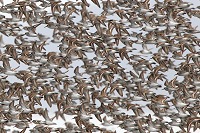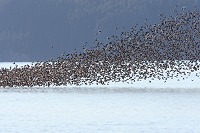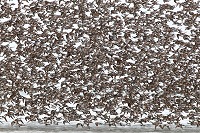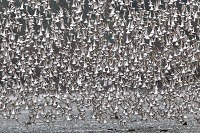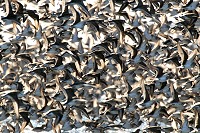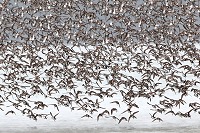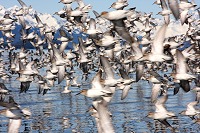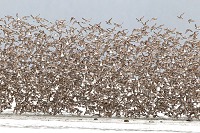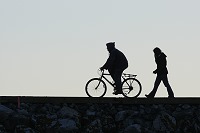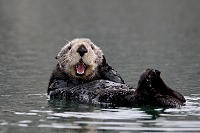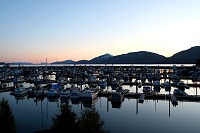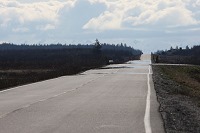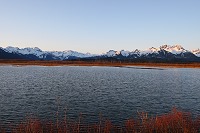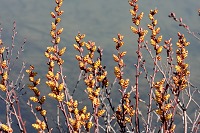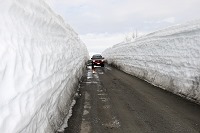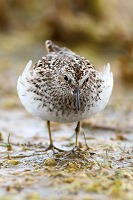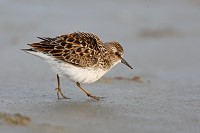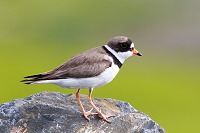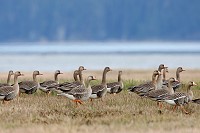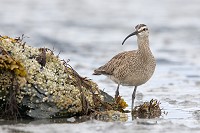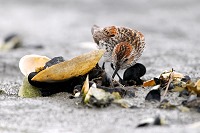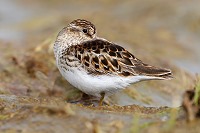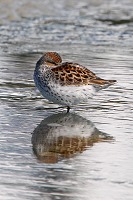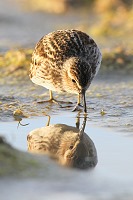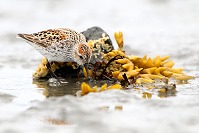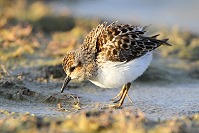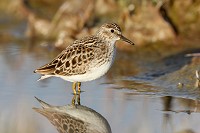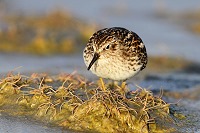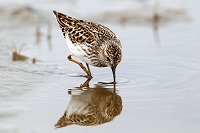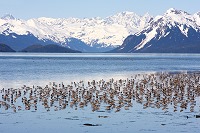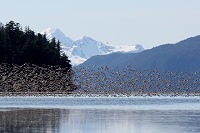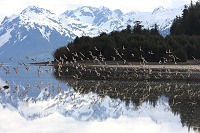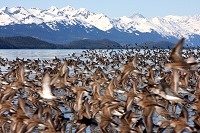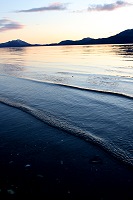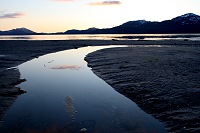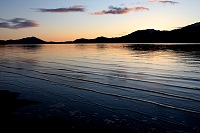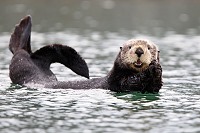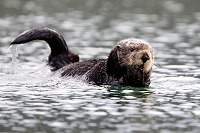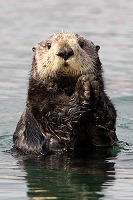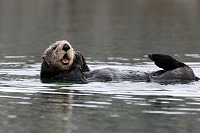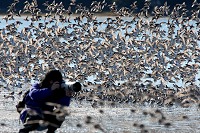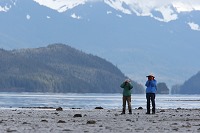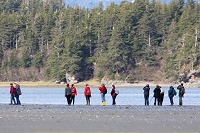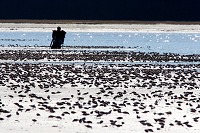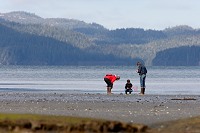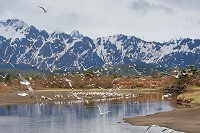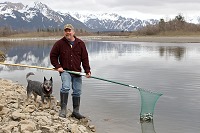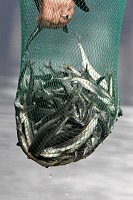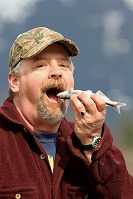 |
~ City of CORDOVA, ALASKA ~
| |
|
Located on the eastern shores of Prince William Sound, the city of Cordova is a tightly knit community of about 3,000 Alaskans.
Cordova mainly thrives on the riches of the sea, harvesting salmon, halibut, cod and other seafood produce, but also welcomes
tourists and bird watchers.
Every year, the Copper River Delta is the stage for an incredible event of nature: the shorebird migration,
when thousands of birds stop along the delta to feed.
|
|
|
|
|
|
City:
State:
|
Cordova
Alaska
|
Latitude:
Longitude:
|
60�33' N
145�44' W
|
Population:
|
Approx. 3,000
|
Rainfall:
Snowfall:
|
89 inches yearly average
127 inches yearly average
|
| |
Cordova is not connected to the wider Alaskan road system, therefore is only accessible by air or marine transportation mainly provided by
the Alaska Marine Highway system.
|
|
|
Ferry to Cordova - Whittier Ferry |
|
|
Since there are no roads leading to Cordova, we need to board the ferry departing from the port of Whittier located about 60 miles south east of Anchorage.
Whittier is accessible through the Anton Anderson Memorial Tunnel. With a length of 2.5 miles, it is currently the second longest road tunnel in
North America, behind the Boston "Big Dig" tunnel.
|
|
|
|
|
|
|
Crossing Prince William Sound on the M/V Aurora takes almost 7 hours. Fortunately, the monotony of the long trip is broken by marine wildlife sightings
including Whales, Dall's Porpoise and Sea Lions.
If you're pressed for time, you may want to travel on the high speed ferry Chenega which can complete the journey in approximately 3 hours instead
of 7.
|
|
|
Thousands of Sandpipers fly in tight formation across the bay during their annual migration to the Copper River Delta. It's
amazing to see the birds in synch with nature as the flock mimics the shape of the hills in the landscape.
|
|
|
It's now the peak of the Sandpiper migration. Thousands of birds roost on the beaches of Cordova at low tide, covering the ground.
Below: Sandpipers rest side by side on one leg, forming a mat of birds. They suddenly take off in unison in front of a dazzled photographer.
|
|
|
|
|
|
|
Left: Up close, we can see how closely packed the birds are while they rest.
Below: Just before take off, they all stand up at the same time.
|
|
The annual shorebird migration is an amazing spectacle of nature. Just imagine tens of thousands of birds darkening the sky on a clear spring day.
From afar, they are just like a huge swarm of mosquitoes oscillating above the bay.
|
|
|
|
|
|
|
But look up close and we quickly realize they are Sandpipers, so many of them...
|
|
|
Cordova Sandpiper Migration |
|
|
The number of Sandpipers gathering at the Bay is increasing in the few days leading up to the peak of the migration. The flock of hundreds we first saw
has now grown to several thousands.
As the shorebirds fly across the sky, the shape of the flock morphs from a huge ball to an elongated ribbon while "pulsating" at each change in
direction.
We later found out that today was the culmination of the migration. Although it was not as good as the previous year,
it was still a mesmorizing sight.
|
|
|
|
|
|
|
Witnessing the events in person is really the best way to fully experience the bird migration. The pictures alone don't completely
tell the whole story. Indeed, aside from seeing the huge flock of birds dancing in the sky in ever changing shapes, you can actually hear
the amazing "whooshing" sounds as the Sandpipers suddenly change direction at the same time in mid air.
|
|
|
|
|
If you happen to be in the middle of the flock as the shorebirds take off, it feels like a chaos of sights and sounds all around you.
|
|
|
The Cordova Harbor, at the heart of this fishing community, teems with activity as crewmen prepare their boats. However, we decide
to show the harbor under a more muted lens: it is still a peaceful setting in spite of the roar of the boat engines.
Below: two girls enjoy the company of a resident Sea Otter.
|
|
|
|
|
|
Thank God for the Copper River Highway. Without it, Cordova would feel much more confined. The highway allows you to escape
up to 50 miles out of town, a welcome contrast to the few blocks that mostly define Cordova. We drive past Eyak Lake and cruise east
across the Copper River Delta. The comfort of first 12 miles being paved is quickly replaced by the dust of the ensuing dirt road. We
realize we are in the middle of nowhere... The weather is cooperating, allowing us to enjoy the landscape.
|
|
|
|
|
|
|
|
|
At mile 20, the road is getting narrower due to the snow still on the ground, and at each passing mile, the snow becomes more of a hindrance.
What an adventure! We have to drive in snow troughs that are taller than our vehicle, and drive around and over mounds of snow in the middle of
the road.
|
|
|
|
No problem, the trusty 4Runner can handle that with ease. However, the excitement and the gratification of discovering new territory is
suddenly shattered by an obstacle now unsurmountable. To our dismay, the road has not been plowed all the way to the "Million Dollar Bridge".
The snow drifts fueled by the strong winds along the Copper River have completely swallowed the road. Disappointed, we have to turn back at mile 23.
|
|
|
|
|
|
|
|
|
The Copper River Delta is a prime rest stop for migrating birds due to the abundance of food. Bird watchers can spot
Western Sandpipers, Least Sandpipers, Whimbrels, Dunlins, Greater White-Fronted Geese and Swans, among many other species.
Below (right): an occasional Semipalmated Plover makes an appearance. Tiny, shy and moving fast, they are quite difficult
to photograph.
|
|
Above: a Least Sandpiper fluffs its feathers as it looks for a sand worm on the beach.
Right: a group of Greater White-Fronted Geese roaming the tidal flats.
Far Right: Whimbrel scouting for food at low tide.
|
|
|
|
|
|
Sandpipers Looking for Food |
|
|
These tiny birds need to refuel after their long migration north. The sea shells in the picture give an idea of the size of the birds.
|
|
|
Let's get away from the excitement of the big flocks and let's get closer to these tiny Sandpipers.
Here are the birds that make the annual migration such a unique event.
|
|
|
|
|
|
|
Hartney Bay is just a few miles south of Cordova. The short scenic drive will reward you with some beautiful landscape.
|
|
|
|
|
Below: Hartney Bay at sunset. The frenzy of the shorebirds has temporarily subsided, leaving a peaceful setting. Tomorrow, the birds will
be back.
|
|
|
Cordova has some cute year round residents in the harbor. Several Sea Otters can often be seen eating shellfish while
swimming alonside the boats.
|
|
|
|
|
|
|
The annual bird festival during the month of May attracts lots of birdwatchers and photographers to Cordova.
And even after the birds leave, it is still a pleasure to take a walk on the beach.
|
|
At about mile 15 on the Copper River Highway, a small winding dirt road will lead you to the Alaganik Slough. There, we saw
Seagulls, Canada Geese, Bald Eagles and a group of Greater White-Fronted Geese.
At the time of our visit, the slough was swarming with Hooligans and we met a couple of local dipnetters. In just 2 to 3 scoops, they
filled up their 5 gallon bucket. It took them less than 5 minutes.
|
|
|
|
Go to the Moon & Get the Best Pictures
...Smile... ' Click! '

[email protected]
© Copyright Go2Moon, Alaska


